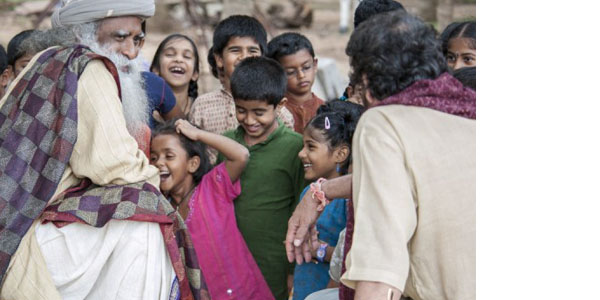Mahabharat Episode 10: The Yadava Clan and Krishna’s Birth

“Everywhere else, the tradition and the dharma of the day was, it does not matter how a child was born, if a child was born to a mother who belongs to a certain clan he became a legitimate part of that clan.”
—Sadhguru
Sadhguru: So far, we have looked at the story of Yayati’s son, Puru, and his lineage. Puru also had a brother Yadu, who came down south to where the present town of Mathura is. Different tribes lived there, and none of these tribes believed in having a monarch or a king. They were ruled by a council. Yadu married into the Naga tribe, and since he had been cursed by his father never to be a king, he joined the governing council. All these clans together became known as the Yadavas because Yadu became the chief of the council.With Jarasandha’s support, Kamsa gathered numbers around himself and for the first time in the history of the Yadava clan, he dismissed the council, wore a crown and proclaimed himself king.
A few generations down the line, Vasudeva was born. Vasudeva’s sisters were Preetha and Srutadevi. Preetha was given in adoption to her uncle Kuntibhoja, who did not have children. He loved this girl so much that he gave his own name to her. Instead of calling her Preetha, he called her Kunti.
Vasudeva had two wives, Devaki and Rohini. Devaki had a brother whose name was Kamsa. Kamsa was born out of a rape. Everywhere else, the tradition and the dharma of the day was, it does not matter how a child was born, if a child was born to a mother who belongs to a certain clan he became a legitimate part of that clan. But the Yadavas rejected Kamsa. They called him an illegitimate child. They refused to include him into the governing council though he was a great warrior because he was too obnoxious and vulgar in his ways. But he struck a friendship with another great king of the east who was Jarasandha. With Jarasandha’s support, Kamsa gathered numbers around himself and for the first time in the history of the Yadava clan, he dismissed the council, wore a crown and proclaimed himself king.
Once he became the king, he was the undisputed power. He went about doing things in his own crude ways. People suffered a lot but they couldn’t do anything because Jarasandha was a very big force. As Kamsa’s tyranny went on, he was cursed that he would be killed by Devaki’s eighth child. So he imprisoned Devaki and Vasudeva and as each child was born, Kamsa would hold its legs and smash it on the floor.
When the seventh child came, Vasudeva managed to smuggle it out and replace it with a stillborn child that they found elsewhere. This seventh child was smuggled across the Yamuna river to Gokula and given to Rohini, the other wife of Vasudeva. The name of this child was Balarama.
Then, when the eighth child was to be born, they hired occult people who put the soldiers guarding the prison to sleep. Vasudeva took the just-born child across the river to Gokula. There, Nanda’s wife Yashoda had delivered a girl. Vasudeva placed this just-born male child there, took away the female child and brought it back.
When Kamsa came the morning after, Devaki pleaded, “It’s just a girl. It is not a boy who is going to grow up and kill you, this is a girl. She will get married and go away. Please spare her life.” Kamsa replied, “Nothing doing, why take a chance?” He just picked up the infant, twirled her, and threw it up.
But the girl didn’t fall down. She took on a different form and said, “The one who is to kill you is still around. I am not the one.” Kamsa was terrified. He sent out his soldiers with orders that any child born in this region, within three months of age, should be killed. Soldiers went out, slaughtering every infant within three months of age. But Krishna was thriving, just a few months old.
So, in the Yadu clan, Vasudeva has two wives, Devaki and Rohini. The only surviving child for Devaki was Krishna. And Rohini had Balarama and Subhadra. Among Vasudeva’s sisters, Shrutadevi married Damagosha. The other sister Preetha or Kunti, married Pandu of the Kuru clan.
Editor’s Note: A version of this article was originally published in Isha Forest Flower August 2015. Download as PDF on a “name your price, no minimum” basis or subscribe to the print version.


